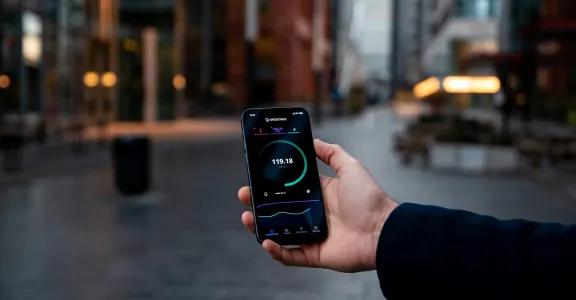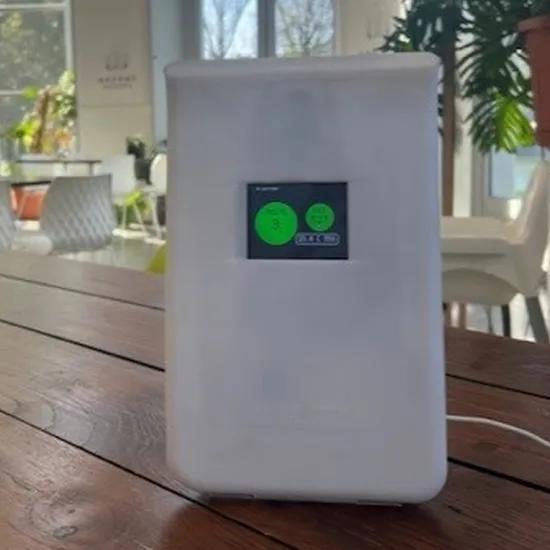Whichever way you look at it, manufacturing companies are currently competing with players all around the globe. To stay competitive, adding IoT is indeed a smart move, although it’s not always easy to do. You have to keep working with different aspects of your business model and, hence, your organisation. Anyone wanting to seize opportunities tomorrow, making sure not to be late, should definitely start today.
On 13 December, we are organising a masterclass ‘Getting value from your products with IoT’. In this blog, we tell you why incorporating IoT into a physical product should be a priority for you today.
1. Users expect it
Users find that digital functionalities such as control via apps and access to the data of the product are increasingly an essential part of their product's performance and user experience. A digital interface allows you to interact - remotely - via a (mobile) device with the product. This interface can in turn be personalised to suit different users and can be further extended via updates and different licences. If you want products to seamlessly integrate with users' existing applications and connected products, they should have at least connectivity on board. It should also be possible to make data available meaningfully to external systems. Chances are that at some point your customers will have certain wishes or even expectations about this is becoming ever more likely.
2. Competitors are at it
Today, companies around the world have access to technology. That means that your company is involved in a global competition. The development of new products is accelerating. At the same time, many product builders find themselves in a race to the bottom when their products become mainstream and have to compete on price.
This is why product builders are looking for new value-added solutions and for more services. Particularly with new digital applications, the 'first mover' can take a market, learn from it and systematically improve its solutions. At the same time, competition may come from many more - and unexpected - corners. Think of digital start-ups and scale-ups, which may be building digital solutions for products faster than you have decided to expand your products digitally. Don't stay behind!producten steeds vaker minstens connectiviteit aan boord te hebben. Ook dienen ze in staat te zijn om hun data zinvol ter beschikking te stellen van externe systemen. De kans dat uw klanten hier op zeker moment ook wensen of zelfs verwachtingen over hebben wordt steeds groter.
3. Delivering solutions rather than physical products
Thanks to digital functionalities, you can create an integrated total solution that delivers more value than just the functionality of the physical product on its own. For example, products that have a more autonomous operation, cooperate with other products/systems or can be monitored remotely as a result. In addition, you can provide digitally supported services around the physical product. This can range from some additional product-related services for maintenance and optimisation of the product to offering the entire product as a service. Both total solutions and services match the evolution among users towards more simplification, more unburdening and less ownership of products.
4. Added value for users... and product builders
Many of the innovations on the market actually demonstrate that smart products do deliver value. In consumer products today, for example, this is often translated into improved user experience and in industrial applications most often in cost reduction thanks to more efficient processes which depend less on human intervention or consumption of energy and raw materials. That added value for users results for the product manufacturer into revenue from the sale of higher-margin products and services, and thus new income streams. Serving users better and building a more direct interaction with them through digital solutions also creates a better customer loyalty. Data from connected products allows product manufacturers to optimise their internal processes, for example around configuring, maintaining and customising products. In addition, product usage data and more direct interaction with users also provides insights into their needs and into possible new solutions.
5. IoT technology has become more mature
The technology to realise smart product solutions is more widely available. Whether it involves sensors, computing power, connectivity, AI, cloud or apps ... a lot is possible in technological terms, especially with the flexibility that is inherent to software. For each of the technology layers, not only different technologies are possible, but also different integrated building blocks (modules, platforms, services) that allow faster development. Product builders can therefore focus on building the application and its specific added value, instead of developing everything themselves from scratch. There is certainly room for improvement in terms of interoperability and security, but we see a clear evolution in those building blocks towards more usability, integration and standardisation.
6. Start today so you are ready tomorrow
Do you see the options, but prefer to wait a bit before taking a step towards smart(er) products? Extending your product with IoT is not just adding some technology to your product. You often have to work with different aspects of your business model and, hence, your organisation. Building and engaging the right mindset and skills to make your smart product ideas a success is not something you can do in just one day. Anyone wanting to seize opportunities tomorrow, making sure not to be late, should definitely start today.c
7. Sirris is here to help you
'Starting' does not mean getting started with technology right away, but rather first looking for valuable applications and a compelling business case. This is not always obvious, especially if you stay within company walls and the business-as-usual continues. A fresh perspective from outside and insights from the experiences of other companies can provide a boost. That is why we have bundled our tips & tricks in the masterclass 'Getting value from your products with IoT’, to get you started with the strategy and market fit of your smart product. In this half-day masterclass, we first look at what business ideas are possible and then provide tools to develop a business idea. In the included individual follow-up session, we review with you the next concrete steps towards smart(er) products.
Interested? More information about the masterclass and how to sign up can be found here.






